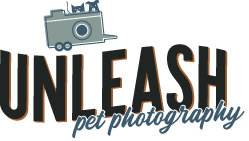K9 Veterans Day - March 13
/K9 Veterans Day - March 13
March 13 is K9 Veterans Day in the USA. This is a day where homage is paid to all four-legged soldiers. Although we do not have a similar day in Canada, we should remember to honour the service given by our canine friends to our Canadian Military troops as well.
Here are some fun facts about our amazing canine soldiers:
Dogs have been used in warfare since ancient times. Attila the Hun used dogs, as did Napoleon.
Often large mastiff or molosser type breeds would be strapped with armour or spiked collars and sent into battle to attack the enemy.
Gifts of war dog breeding stock between European royalty were seen as suitable tokens for exchange through the Middle Ages.
Sergeant Stubby, a Boston Terrier has been called the most decorated war dog of World War I and the only dog to be nominated for rank and then promoted to sergeant through combat. Among many other exploits, he's said to have captured a German spy. Today, he is recognized at the Smithsonian Institute.
Dogs were also used as mascots in World War I propaganda and recruiting posters.
The United States Marine Corps used dogs to take islands back from Japanese occupying forces in World War II. During this period the Doberman Pinscher became the official dog of the USMC.
During the Vietnam War, 10,000. servicemen served as dog-handlers. It is estimated that the K9 Units saved over 10,000. human lives during this war.
In 2011 - the United States Navy Seals used a Belgian Malinois military working dog named Cairo in the operation that searched down and killed Osama bin Laden, the long sought-after terrorist.
Ten years ago, the U.S. military had roughly 1,400 dogs trained for service in tracking, patrol and explosives detection. Today, that number has ballooned to 2,700.
canine friends have been trained as trackers, scouts, sentries, messengers and used in many dangerous combat situations since then. As warfare has progressed, their purposes have changed greatly.
Today, we use dogs in raids for apprehending fleeing enemies or prisoners, or for searching areas too difficult or dangerous for human soldiers such as crawl spaces or bomb detection.
As integral as dogs were considered to the Canadian war effort in Afghanistan, they were owned and handled by contractors hired by the Canadian military specifically for the task — contracts that expired when the mission ended.
Canadian special forces gleaned much from allies and these contractors in Afghanistan in the employment of canines in support of special-operations forces.
Following Afghanistan and since 2012, our Canadian Military have quietly built up their own canine units.
In particular, the Canadian Forces are in search of untrained Belgian Malinois, German shepherds and Dutch shepherds between the ages of 10 months and three years.
The selected dogs need to show a sound temperament and a bold and confident attitude with no signs of either shyness or over-aggression. They also need the ability to work with people and learn, a strong drive to hunt and retrieve and an implicit ability to fight if required.
They are also forbidden from showing any fear of water, any propensity to bite their handler during stressful moments. They need to show no fear and not be distracted by unsure footing, tight and/or dark enclosed spaces, moving vehicles and loud noises, including gunfire.
In the field, dogs can help to uncover an improvised explosive device saving many human lives. They have an innate ability to track a scent - which the trainers enhance, starting when the puppies are just six weeks old. Dogs can move faster than humans, taking down a threat without using lethal force so that soldiers can operate more safely. Their hearing is far more sensitive, allowing them to detect sounds inaudible to their human handlers.
A dog's military career lasts between 7 and 12 years.
You don't need to worry that the Canadian military has been secretly sending dogs into battle without the proper equipment, as public records show the Canadian government has purchased custom-fitted vests for the military's canine units that include video cameras and receivers that let handlers see and hear what their dogs are experiencing in the field.
If you ever have the opportunity to meet one of these amazing four-legged soldiers, don’t forget to thank them for their service in keeping our nation safe and free.










